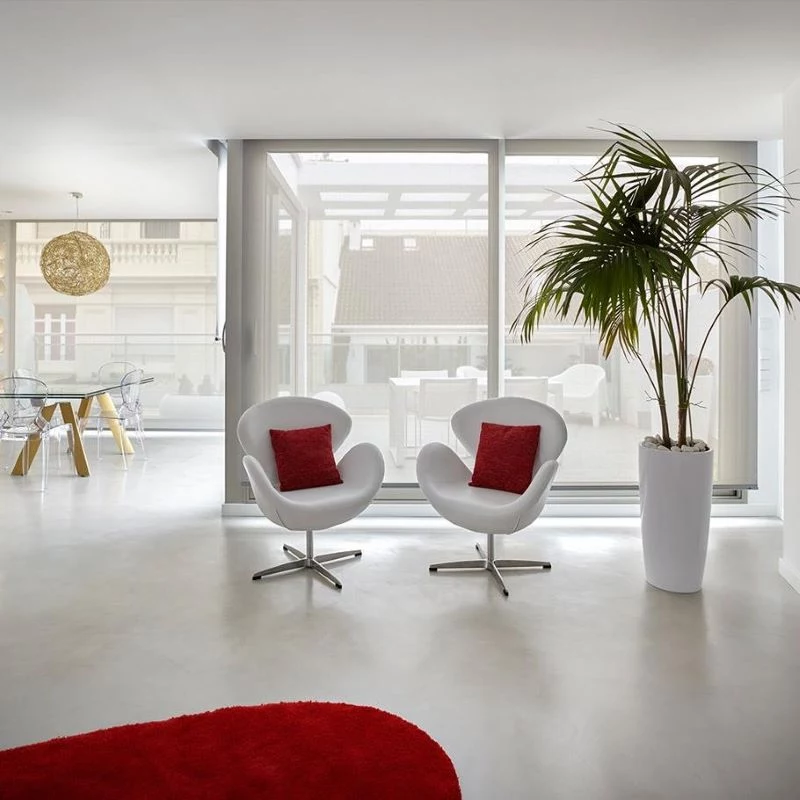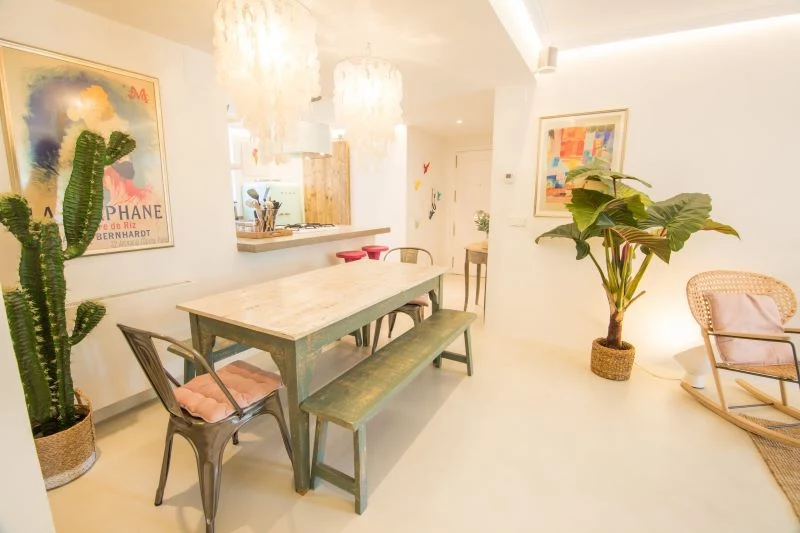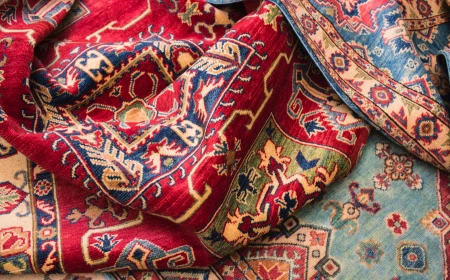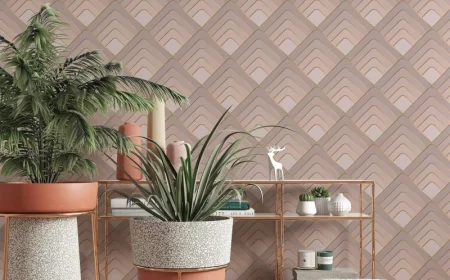Thinking About Microcement Floors? Read This Pro’s Guide First
I’ve spent a huge chunk of my career on my hands and knees with a trowel. I’ve worked with just about everything you can put on a floor, but for years now, my world has revolved around seamless surfaces—specifically, microcement. When I first got into it, this stuff was a secret weapon for high-end architects. Now? I get calls every week from folks wanting it in their own homes. It’s a genuinely fantastic material, but it’s also probably one of the most misunderstood.
In this article
Let’s be real, a lot of what you see online makes it look like you just paint it on and call it a day. That couldn’t be further from the truth. Microcement is a craft. It’s a layered system that demands a deep respect for the materials and, more importantly, what’s happening underneath the surface. A stunning microcement floor isn’t about that final color—it’s about the dozen or so critical steps that came before it. So, this is my attempt to pull back the curtain and share what I’ve learned from countless jobs, both the perfect ones and the few that taught me some very hard lessons.

So, How Can a Floor Be So Thin and Strong?
Before we even think about picking up a trowel, you have to understand what microcement actually is. And no, it’s not just watered-down concrete. That’s mistake number one.
Think of it as a high-tech composite system: a blend of super-fine cement, powerful polymers, special aggregates, and a few other secret-sauce additives. A standard concrete slab needs to be inches thick to not fall apart, but a microcement floor is only about 2-3 millimeters—the thickness of a couple of credit cards. How is that possible? The magic is in the polymers.
These are liquid resins that, when mixed with the cement powder, create this incredibly tough and flexible matrix. This does two amazing things:
- It Sticks Like Crazy: The polymers create a chemical bond that’s way stronger than just a physical one. This is why we can go right over existing tiles or concrete. Regular cement would just pop right off.
- It Has a Little Give: While it’s super hard, the floor has just enough flex to handle the tiny movements of a house settling or changes in temperature. This is how we get those huge, seamless surfaces without needing ugly expansion joints everywhere.
Knowing this is key. The strength isn’t in its bulk; it’s in its bond. And that’s why the prep work underneath is everything. A perfect application on a bad foundation will fail. Every single time.

The Most Important Step: Getting the Foundation Right
I tell every new person on my team the same thing: 90% of a microcement job’s success is decided before you even open a bucket. You see a beautiful, smooth floor. I see the layers of painstaking prep work underneath. If that foundation is shaky, the whole thing is a waste of time and money.
What We Look For in a Subfloor
The perfect canvas for microcement is flat, stable, dry, and clean. Here’s how we check:
- Stability Is Non-Negotiable: The floor cannot have any bounce. We walk every single inch. On a wood-joist floor, this might mean adding more supports or putting down a thick cement backer board, screwed down every six inches. If you put microcement on a bouncy floor, it’s guaranteed to crack.
- Flatness Is Key: We use a long straightedge to find any dips or high spots. Anything more than a couple of millimeters gets fixed—low spots with a self-leveling compound, high spots ground down with a diamond grinder. An uneven surface creates weak points.
- Moisture Is the Silent Killer: This is the one that gets people. We use a professional moisture meter (like a Tramex) on concrete slabs. If the humidity is too high, moisture vapor will eventually push its way up and cause blisters or make the microcement delaminate. I once had a client insist we skip applying a liquid damp-proof membrane (DPM) to save a day and a few hundred dollars. Two months later, I got the call. Big, ugly blisters were popping up across their new kitchen. We had to mechanically grind the entire floor off and start over. It cost them double what the DPM would have. It’s a gamble I will never take.

Going Over Existing Floors
One of the biggest selling points is that you can often avoid demolition. But you have to be careful.
- Over Tiles: First, we tap every single tile to listen for hollow sounds—that means it’s loose and has to go. Then we degrease and grind the shiny glaze off the tiles so the primer has something to bite into. The final, crucial step is filling all the grout lines to create a perfectly flat plane. If you skip this, you’ll eventually see the faint outline of the old tiles through the new floor, a lovely phenomenon we call “ghosting.”
- Over Plywood: Wood moves, period. To handle this, we make sure it’s screwed down tight, then use a special flexible primer and embed a full layer of fiberglass mesh into the first coat. This mesh acts like a buffer, absorbing movement. Honestly, though, we always prefer to install cement backer board over wood for a rock-solid base.

The Application: A Step-by-Step Breakdown
Once the substrate is perfect, it’s go-time. This is a multi-day process with zero shortcuts. A typical 200-square-foot kitchen floor is a full week’s work. Here’s a realistic timeline:
- Day 1: Final substrate prep. Grinding, cleaning, and masking everything off.
- Day 2: Apply the specialized primer. For concrete, it’s one that soaks in; for tile, it’s a high-adhesion epoxy.
- Day 3: Apply the first base coat with the fiberglass mesh fully embedded. This is the rebar of the system.
- Day 4: Lightly sand the base coat, then apply the second base coat to build strength.
- Day 5: Sand again, then apply the first of two thin finish coats. This is the color and pattern layer.
- Day 6: Final sanding and the second finish coat, followed by the first pore-filling sealer coat.
- Day 7: Apply two final topcoats of polyurethane sealer.
Heads up! After that, you’re looking at about 48 hours before light foot traffic is okay, but you should wait a full week before moving heavy furniture or appliances back onto the surface. Patience is part of the process.

The Layers of a Pro Job
Step 1: Priming. As I said, this is the bridge between the subfloor and the microcement. Using the wrong one is like building a house on sand.
Step 2: The Base Coats & Mesh. This is all about strength. We lay down the first coat, trowel in a heavy-duty fiberglass mesh, and then trowel over it again to make sure it’s completely encased. This provides incredible tensile strength and crack prevention. A second coat goes on top. This two-coat system is non-negotiable for a floor that lasts.
Step 3: The Finish Coats. This is where the artistry comes in. The trowel movements—the pressure, the angle, the gestures—create the unique pattern. By the way, this cloudy, marbled effect is often called ‘movement’ or ‘aguas’ in Spanish. A more modern, minimalist look with less movement is actually much harder to get perfect because every tiny flaw is visible. The color pigment is always mixed into the liquid polymer before adding the powder, ensuring the color is perfect from start to finish.
Step 4: Sealing. Unsealed microcement is basically a sponge. The sealer is what makes it a functional, waterproof, and stain-resistant floor. We first apply a pore-filling primer to stop the topcoat from soaking in unevenly (which causes a blotchy finish). Then, we apply at least two coats of a commercial-grade, two-component polyurethane sealer. This is where you choose your sheen, and I always give clients this advice:
- Matte is fantastic at hiding small scratches and scuffs from daily life, but some oils can be a bit tougher to clean off it.
- Gloss gives a dramatic, wet look and is very durable, but it will show every single smudge, footprint, and scratch. It’s a high-maintenance look.
- Satin is the happy medium—easy to clean with a soft sheen that’s more forgiving than gloss. It’s the most popular for a reason.
A quick safety note: These professional sealers are serious chemicals. We always use full-on respirators, gloves, and eye protection. The space needs to be well-ventilated, and no one should be in there without gear until it’s cured.
Is This a DIY Project? The Honest Answer
For a tiny decorative backsplash? Maybe. An enthusiastic DIYer with a lot of patience might pull it off. But for a floor in a main living area? I strongly advise against it.
The risk of failure is just too high, and fixing it is a nightmare. A failed job has to be mechanically ground off—a loud, dusty, and expensive process that often costs more than hiring a certified installer in the first place. When you see a pro’s toolkit, you’ll understand why. We’re talking about planetary floor grinders, HEPA dust extraction systems that cost thousands, specialty slow-speed mixers, and a whole collection of specific trowels. The cost of the gear alone is a huge barrier.
What to Expect in Costing
This brings us to the big question: how much does this stuff cost? It varies by region and the complexity of the job, but you should budget anywhere from $100 to over $250 per square foot for a professional installation. I know, that can sound like a lot. But here’s the breakdown: roughly 30% of that cost is for the premium materials (the microcement system, epoxy primers, and high-end polyurethane sealers from brands like Semco or Forcrete). The other 70% is for the highly skilled labor—the meticulous prep, the moisture testing, the multi-day, multi-layer application, and the experience to know how to solve problems on the fly.
You’re not just paying for someone to spread mud. You’re paying for the expertise that ensures it will last a lifetime.
Living With Your New Floor
I’m always upfront with clients: microcement is tough, but it’s not made of diamonds. It needs some basic care.
- Clean Smart: Always use pH-neutral cleaners. You can find specific microcement soaps, or a great household option is Dr. Bronner’s Sal Suds diluted in water. Bleach or harsh acidic cleaners will eat away at the sealer.
- Wipe Spills: Clean up things like red wine, oil, or coffee right away. The sealer buys you time, but it won’t hold off a puddle of acid forever.
- Protect from Furniture: Use felt pads under every chair and table leg. This is a simple rule for any hard flooring.
- What About Repairs? This is crucial. A perfect, invisible patch in the middle of a microcement floor is basically impossible. The color and trowel pattern can’t be matched seamlessly. The proper fix for a deep gouge is to re-coat the entire surface from wall to wall. This is why we stress prevention so much from day one.
If you’re looking to hire an installer, ask them these questions. Their answers will tell you everything you need to know.
- What specific system do you use and why do you prefer it?
- How, exactly, will you test my subfloor for moisture and ensure it’s stable?
- Will you be embedding a full fiberglass mesh? (If they say no for a floor, that’s a red flag).
- Can I see photos of jobs you’ve completed, and can I maybe speak to a past client?
A true pro will be happy to dive deep into these details. It shows they respect the craft and your home in equal measure.










